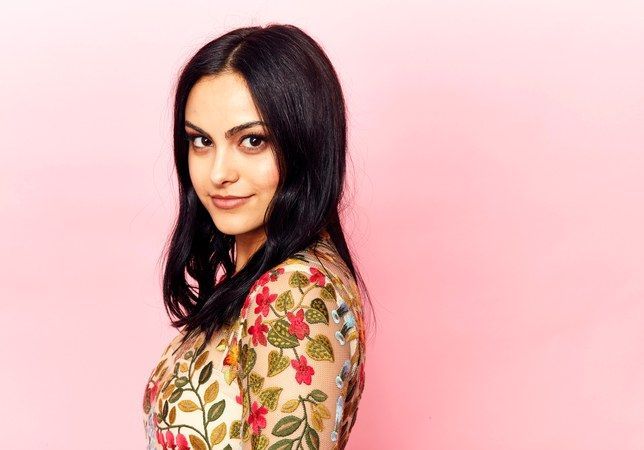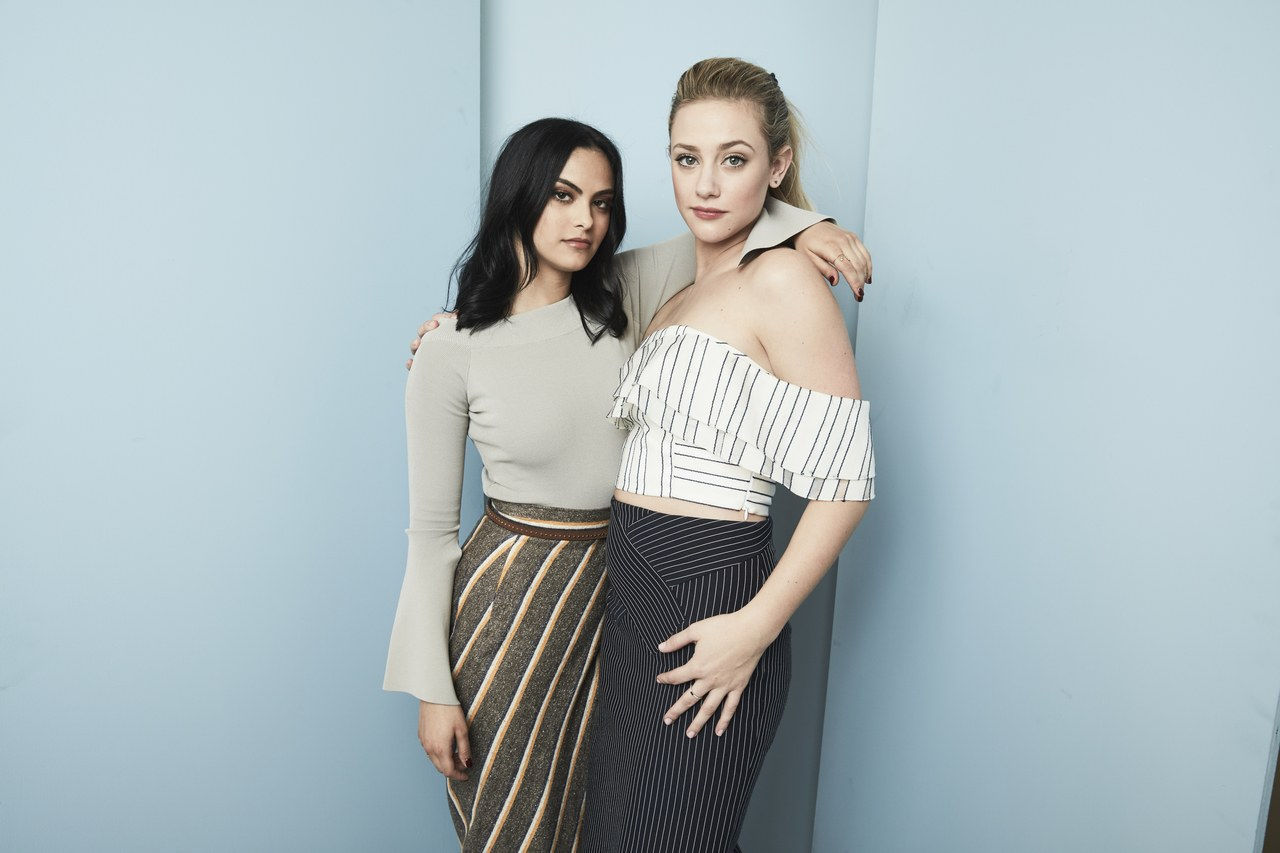Veronica Lodge Was Supposed to Be Just Another Brunette Bad Girl—Now She’s Something Greater

Much has been made of the many changes Riverdale made to the original Archie comics mythology. In 2017 Archie isn’t a blithe doofus who lucked into the affections of not one, but two gorgeous women—now he’s a varsity football player with washboard abs and a budding songwriting career. Meanwhile, Miss Grundy is a sexy librarian of a music teacher, Josie and the Pussycats are a woke neo-soul group, Jughead is a brooding, budding-writer cutie with a way less lame hat, and, of course, Riverdale is the epicenter of a Twin Peaks–style murder mystery that seems to involve every citizen in the whole damn town. (I also don’t remember the comics featuring so much way-obvious Cover Girl product placement, but that’s a topic for another essay.)
While most of these changes are welcome in that they diversify the formerly white-bread town, humanize formerly two-dimensional characters—and hell, just make them hotter—there was one change that gave me very conflicted feels: the decision to de-villainize Veronica Lodge.
Years of exposure to formulaic TV means that even if you never touched an Archie comic, you still knew exactly what to expect the moment Veronica first stepped onscreen. She was the mysterious new girl in town, a raven-haired siren with a dark past, sophisticated enough to casually drop Capote quotes in the middle of Pop’s Chok’Lit Shoppe, beautiful enough to captivate Archie at the precise moment when sweet, pining Betty Cooper is trying to stammer out the old “What are we?” speech.
I’m not ashamed to admit that I had a near-Pavlovian reaction to Veronica’s appearance. When a girl like that steps out of a limo and into a suburban burger joint, you know it’s about to get real. Clearly, she was there to sprinkle some much-needed spice on bland old Riverdale, be Betty Cooper’s archnemesis, seduce Archie with her HBIC charisma, and entertain us with endless scheming and catfighting. Veronica Lodge had arrived—and I wanted her to get her bitch on in the baddest way.
Only, this Veronica is a lot more complicated than that.
This Veronica sweeps into town in a swirl of rumors about her not-so-well-kept secret: Her father, Hiram Lodge, was arrested in a high-profile fraud case that turned Veronica from—in her own words—“a shallow, toxic rich bitch who ruins everything in her path” into a laughingstock. Now she’s thoroughly “humbled” and determined to shed her bad-girl rep in Riverdale.
Dear reader, if you could have seen my face the moment Veronica announces her bad-girl-gone-good intentions, it would have looked exactly like this GIF.
How could this shady queen we had only just met be on the path of good? Why could there not be a Riverdale prequel set in 2015, in which we savor the sight of Veronica Lodge running her private New York prep school with an iron fist? This girl wears a sheath dress, stilettos, and pearls to high school—you know she can serve Georgina Sparks realness when she needs to. But if Veronica Lodge’s good-girl aspirations were almost a deal breaker, it’s only because of my lifelong love for a very specific archetype: the bad-girl brunette (we’ll call her BGB for short).
What is a BGB? She’s self-assured, headstrong, maybe a bit domineering (think Jackie on That 70s Show). Sometimes she’s troubled and weird (Allison Reynolds in The Breakfast Club), sometimes she’s rich, sophisticated, and wise beyond her years, making her a one-liner dispenser par excellence (Buffy’s Cordelia Chase). At her worst, she’s a scheming, unapologetically selfish alpha-bitch (Courtney Shayne in Jawbreaker or Dynasty’s Alexis Carrington). She’s often—and this is key—unapologetically sexy. Even more terrifying, she’s fully aware of her power over men (think Twin Peaks’ seductive schoolgirl Audrey Horne).
In short, the BGB knows what she wants and is not afraid to demand it. In a pop-culture landscape often lacking in complex depictions of women, it can be totally, vicariously thrilling to see a female character own her power and sexuality. And, OK, I’ll lay it out on the table: I’m a moody brunette weirdo myself and not ashamed to admit I get my life watching BGBs own the room. I’ve always found these characters easy to root for, even (or especially) when they’re a little bit evil.
Of course, not everyone feels that way about BGBs. For every person like me who eagerly breaks out the popcorn every time a ball-busting brunette steps onscreen, just as many people hiss. That’s because BGBs are often asked to play another, less glorious role—that of the rival to a perky blond lead.
Examples of the blond-versus-brunette trope abound in every form of pop culture, from TV and movies to teen lit. Think Beverly Hills, 90210’s drama-queen Brenda competing with poor little rich girl Kelly over Dylan’s affections. Cordelia Chase’s mean-girl wisecracks at Buffy Summers, who’s literally trying to save the world. Vivienne Kensington scheming to humiliate Elle Woods in Legally Blonde (like Reese Witherspoon in a Playboy Bunny costume is ever not winning). Haughty rich girl Lila Fowler stealing boys from Cali-queen twins Elizabeth and Jessica Wakefield in “Sweet Valley High.”
But the fact that the BGB’s selfishness and scheming makes them hated by some has always struck me as hypocritical. After all, the last 20 years of television have been defined by men exhibiting antisocial behavior that puts almost any raven-haired temptress to shame. Think Tony Soprano, a neurotic teddy bear with a body count to rival Jason Voorhees. Don Draper, who slept with and/or lied to 98 percent of the women in Manhattan. Or Walter White, who cut a ruthless path of destruction as he built an international drug empire. Next to these genuinely disturbed dudes, even the bitchiest, most backbiting BGB looks downright quaint. If we cut female characters the same slack we did men, these women—powerful, sexual, funny, and yes, sometimes even selfish or sadistic—would be celebrated antiheroes, not villainesses you love to hate.

But back to the whole blond-versus-brunette thing. It’s as tired and misogynist as tropes get, which is why I’m glad Riverdale lives to upend it at every chance. Yes, Betty and Veronica circa 2017 have their ups and downs and petty jealousies over Seven Minutes in Heaven. And Veronica does want and (spoiler alert) eventually gets Archie. But beyond an early misstep, Veronica also takes pains to be respectful of Betty at every point, even swearing allegiance to her over Archie because, as V puts it, she feels like they “were meant to be best friends, like, it’s my destiny.” Betty eventually gets over Archie, starts dating Jughead (who’s hotter in my book anyway), and the four sip milkshakes in Pop’s like best buds. It’s all so heartwarming. Meanwhile, because Veronica and Betty aren’t wasting energy competing against each other for a dude’s attention, they can join forces to avenge actual injustices—from solving the murder that’s at the heart of season one to getting revenge on a bunch of sexist jocks who are slut-shaming girls at school.
So if Riverdale deprived me of a bitchy brunette antagonist, it gave me something much cooler and even kind of revolutionary. It dares to imagine a world beyond female competition, where women consciously decide to value each other, and to stomp all over the false good-girl, bad-girl dichotomy that holds us all down.
Season one ended with a new mystery and a slightly resparked rivalry, when Veronica notices Archie suddenly pining for Betty now that she’s with Jughead (ugh, dudes). But I’m pretty sure they’ll get over it and get on with the business of being badass, crime-fighting, injustice-exposing best friends. These girls prove that blond or brunette, heroine or villainess, girl next door or new girl in town, when women get along, they get shit done.

